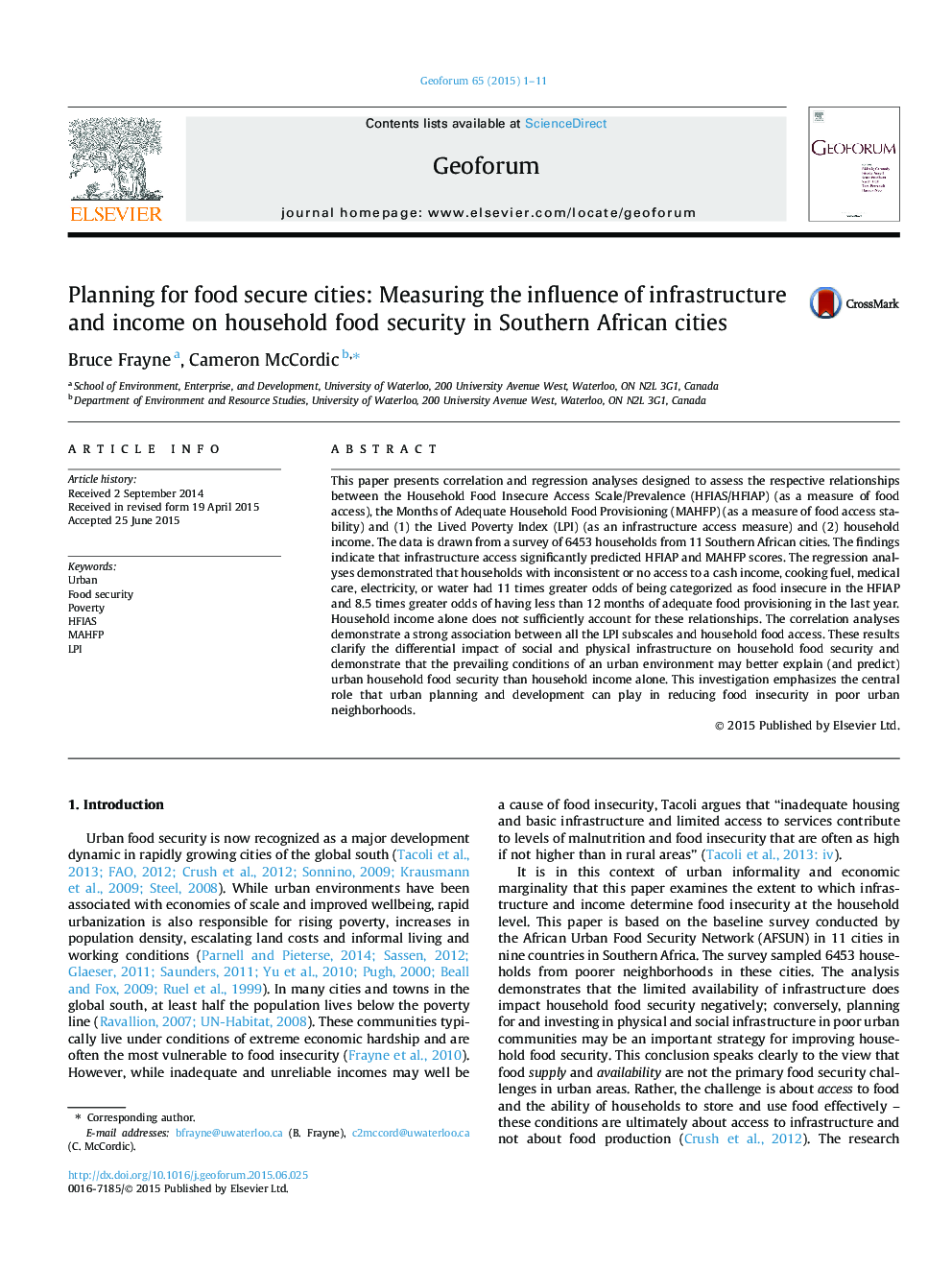| Article ID | Journal | Published Year | Pages | File Type |
|---|---|---|---|---|
| 5073788 | Geoforum | 2015 | 11 Pages |
Abstract
This paper presents correlation and regression analyses designed to assess the respective relationships between the Household Food Insecure Access Scale/Prevalence (HFIAS/HFIAP) (as a measure of food access), the Months of Adequate Household Food Provisioning (MAHFP) (as a measure of food access stability) and (1) the Lived Poverty Index (LPI) (as an infrastructure access measure) and (2) household income. The data is drawn from a survey of 6453 households from 11 Southern African cities. The findings indicate that infrastructure access significantly predicted HFIAP and MAHFP scores. The regression analyses demonstrated that households with inconsistent or no access to a cash income, cooking fuel, medical care, electricity, or water had 11 times greater odds of being categorized as food insecure in the HFIAP and 8.5 times greater odds of having less than 12Â months of adequate food provisioning in the last year. Household income alone does not sufficiently account for these relationships. The correlation analyses demonstrate a strong association between all the LPI subscales and household food access. These results clarify the differential impact of social and physical infrastructure on household food security and demonstrate that the prevailing conditions of an urban environment may better explain (and predict) urban household food security than household income alone. This investigation emphasizes the central role that urban planning and development can play in reducing food insecurity in poor urban neighborhoods.
Keywords
Related Topics
Social Sciences and Humanities
Economics, Econometrics and Finance
Economics and Econometrics
Authors
Bruce Frayne, Cameron McCordic,
